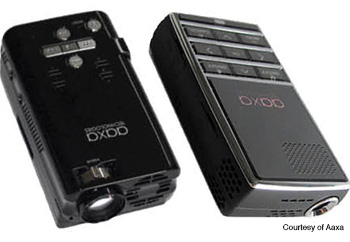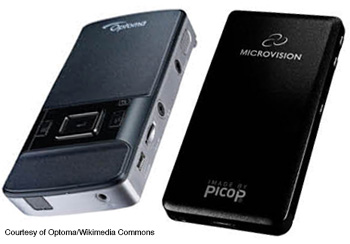None
Picoprojector Technologies: Seeing the Big Picture
Picoprojectors seem to offer the impossible: They are as small as a mobile phone with a screen at least as big as a laptop. This article compares four commercial devices.

Aaxa P2
Technology: CF LCoS |
Aaxa L1
Technology: CS LCoS |

Optoma PK201
Technology: DLP |
Microvision show WX+
Technology: LBS |
Predicted to be the next big gadget, picoprojectors may soon be embedded in a wide range of products, including mobile phones, laptops and cameras. There is currently a three-horse race of competing technologies: liquid crystal on silicon (LCoS), digital light processing (DLP) and laser beam scanning (LBS). We studied four commercial picoprojectors to quantify their differences: an Aaxa P2 color-filter LCoS, Aaxa L1 color sequential LCoS, Optoma PK201 (DLP) and a Microvison Show WX+ (LBS). (The two Aaxa models have since been discontinued, but they are still representative of existing LCoS technology.)
…Log in or become a member to view the full text of this article.
This article may be available for purchase via the search at Optica Publishing Group.
Optica Members get the full text of Optics & Photonics News, plus a variety of other member benefits.
